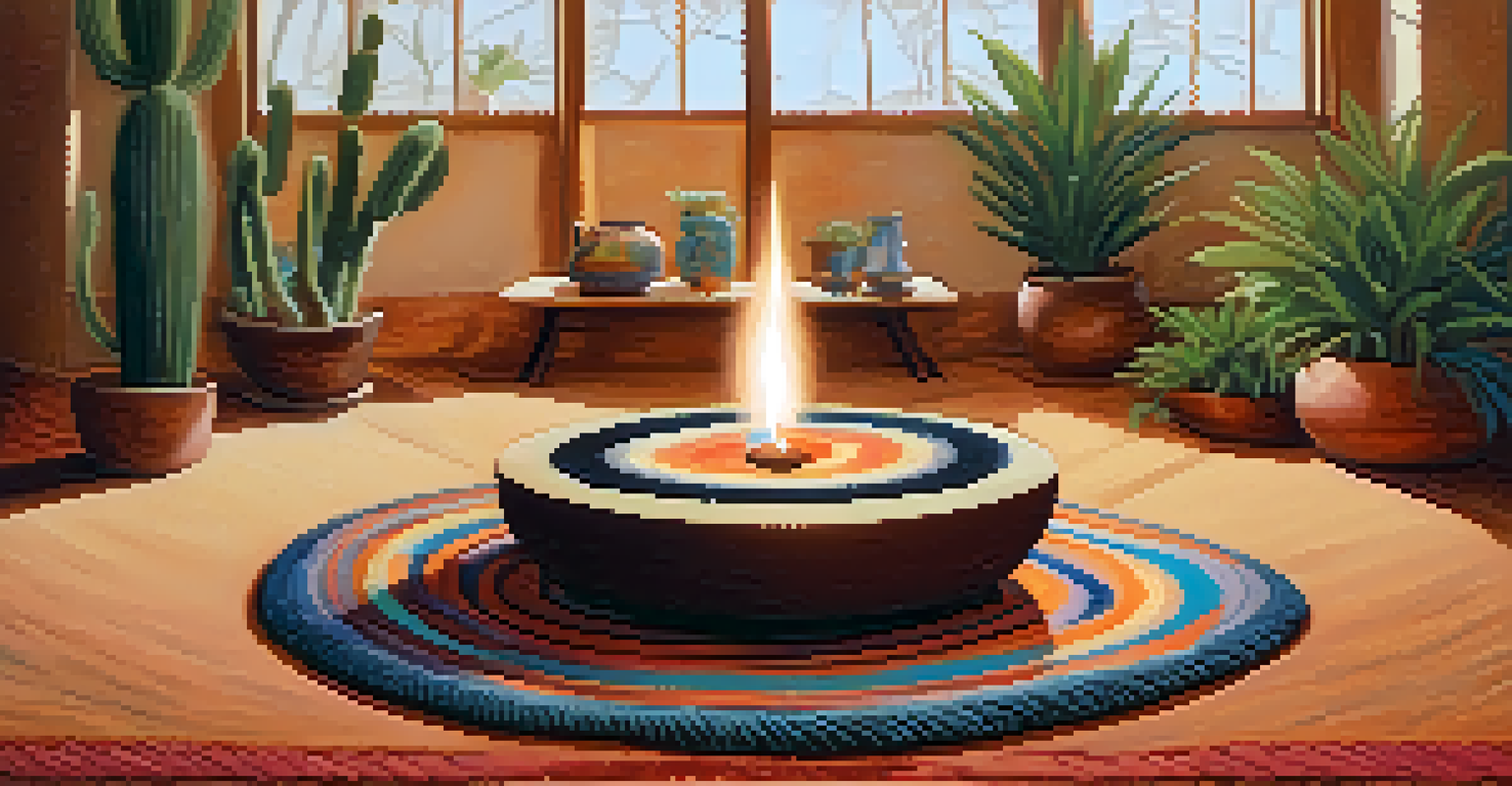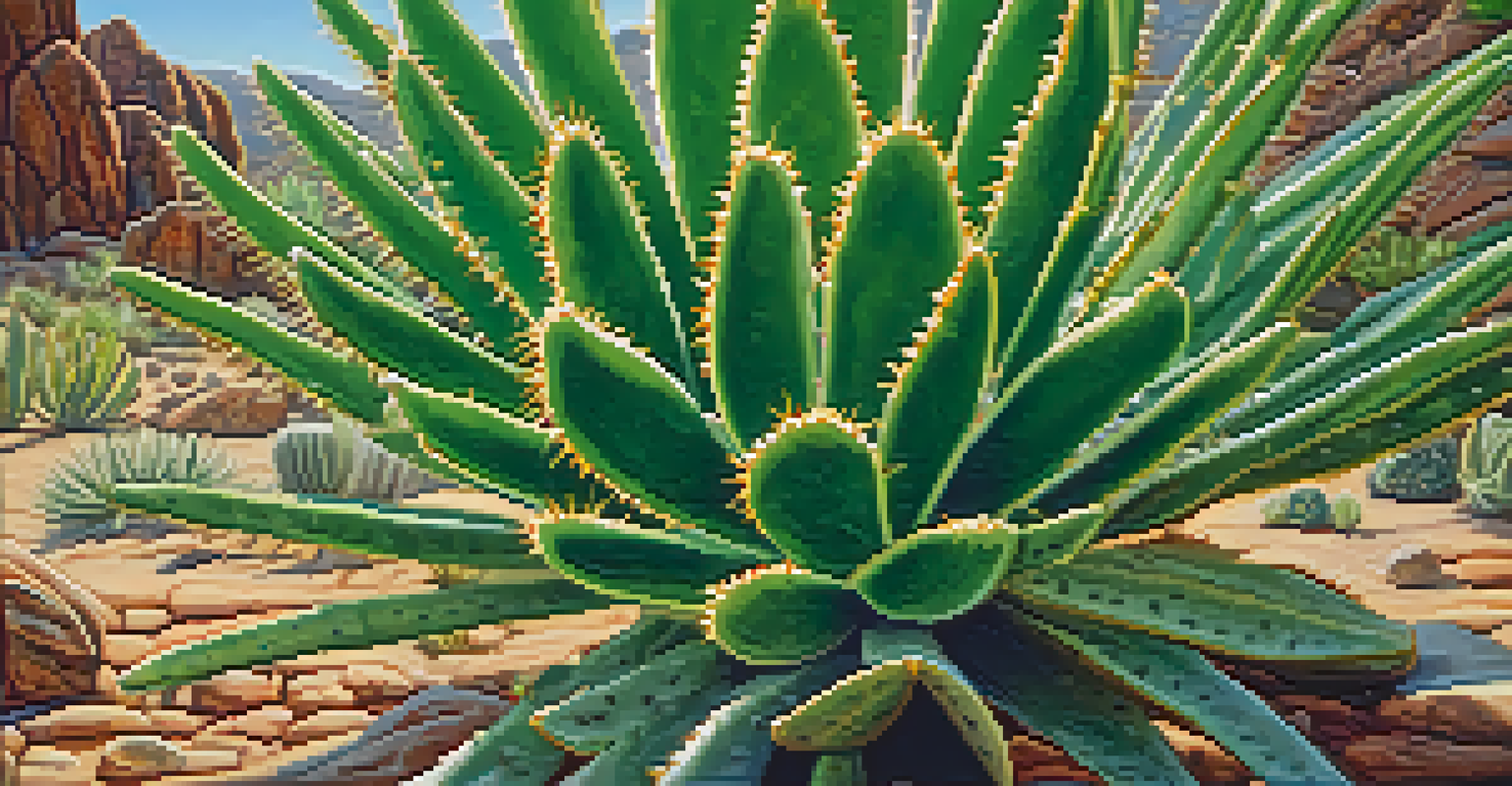Navigating Personal Suffering through Peyote Experiences

Understanding Peyote: A Brief Overview
Peyote is a small cactus native to Mexico, known for its psychoactive properties. It contains mescaline, a compound that can alter perception and consciousness. Many indigenous cultures have used peyote in spiritual rituals for centuries, viewing it as a sacred tool for insight and healing. Understanding its traditional context is key to appreciating its potential in personal suffering.
The mind is everything. What you think, you become.
For those unfamiliar with psychedelics, peyote might sound daunting. However, it’s important to note that many individuals seek it out not for recreational purposes, but for therapeutic ones. The experience often leads to profound reflections and emotional catharsis, helping individuals confront their pain. This understanding sets the stage for using peyote as a means of navigating personal struggles.
In recent years, scientific studies have begun to explore the healing potential of peyote and other psychedelics. For instance, research indicates that these substances can help reduce anxiety, depression, and PTSD symptoms when used in a controlled environment. As we delve deeper into this topic, it's essential to respect both the cultural significance and the emerging scientific evidence surrounding peyote.
The Role of Intention in Peyote Journeys
Intention plays a crucial role in any peyote experience. Before embarking on this journey, taking time to reflect on what you want to achieve can shape the outcome significantly. Whether it's seeking clarity on a personal issue or finding emotional healing, setting a clear intention can guide the experience. This focused mindset helps in navigating the often chaotic emotions that arise during the journey.

Consider this: if you were going on a road trip, you’d likely plan your route and destinations. Similarly, having a destination for your peyote experience can help steer the journey and keep you grounded. This doesn’t mean you won’t encounter unexpected twists and turns; rather, it allows you to engage with them in a more meaningful way. The clearer your intention, the more likely you are to derive valuable insights from the experience.
Peyote's Cultural Significance
Peyote has been used by indigenous cultures for centuries as a sacred tool for insight and healing.
Moreover, sharing your intention with a trusted guide or therapist can enhance the experience. They can help keep you accountable and provide a safe space for processing feelings that surface. This collaborative approach not only enriches the journey but also fosters a sense of community, which is immensely beneficial when dealing with personal suffering.
Preparing Mentally and Emotionally for the Experience
Preparation is a vital step in ensuring a positive peyote experience. This includes mentally and emotionally gearing up for the journey ahead. Engaging in practices like meditation, journaling, or even talking with a therapist can help clear your mind and settle your emotions. By doing so, you create a more receptive state for the insights that peyote can offer.
The wound is the place where the Light enters you.
Imagine trying to listen to a beautiful symphony while surrounded by chaos; it’s challenging to absorb the music. Similarly, a cluttered mind and unresolved emotions can hinder your ability to fully engage with the peyote experience. Therefore, taking the time to prepare can lead to a more profound and enriching journey. It’s about creating the right environment for self-discovery and healing.
Additionally, understanding what to expect during the experience can alleviate anxiety. While the effects of peyote can vary widely, knowing that it may bring up difficult emotions or memories can help you brace for the ride. This awareness allows you to approach the experience with curiosity rather than fear, ultimately leading to deeper insights.
The Experience: What to Expect During a Peyote Trip
A typical peyote experience can last anywhere from 8 to 12 hours, often characterized by vivid visual and auditory hallucinations. Users frequently report a sense of connection to nature and the universe, alongside intense emotional release. This journey may lead you to revisit past traumas or unresolved feelings, which can feel overwhelming yet necessary for healing. Understanding this can help you brace for the emotional waves that might come.
During the trip, it's common to encounter both euphoric and challenging moments. Think of it as a rollercoaster ride—there are highs and lows, but the experience as a whole contributes to growth and understanding. The key is to remain present and open, allowing the peyote to guide you through these emotional landscapes. Trusting the process can turn what seems daunting into an enlightening exploration.
Importance of Intention
Setting a clear intention before a peyote experience can significantly shape the journey and its outcomes.
Having a supportive environment is crucial during this time. Whether it's a trusted friend or a trained facilitator, having someone by your side can provide comfort and reassurance. They can help you navigate the peaks and valleys of your experience, reminding you to breathe and stay grounded when needed. This support can transform a potentially overwhelming journey into a safe space for healing and discovery.
Processing Insights After the Peyote Experience
Once the peyote experience concludes, the real work begins: processing the insights gained. Reflecting on the journey can be as important as the experience itself, helping to integrate newfound understandings into your daily life. Journaling is a popular method for capturing thoughts, feelings, and revelations that emerged during the trip. This practice can aid in making sense of the often surreal experiences encountered.
Additionally, discussing your journey with a trusted friend or therapist can provide further clarity. They can offer perspectives and insights that you might not have considered, turning solitary reflections into a collaborative exploration. This dialogue can also reinforce the lessons learned and help solidify your emotional healing.
Integration is not a one-time process; it can take weeks or even months. Be patient with yourself as you navigate this phase, allowing the insights to unfold naturally in your life. Sometimes, the most profound realizations emerge long after the experience, often manifesting in unexpected ways as you continue on your healing journey.
The Importance of Set and Setting in Peyote Use
The concepts of 'set' and 'setting' are crucial when it comes to using peyote safely and effectively. 'Set' refers to your mental state before the experience, while 'setting' pertains to your physical environment. Ensuring that both are conducive to a positive experience can significantly influence the journey. A calm, safe space combined with a positive mindset can create the ideal conditions for healing.
Imagine trying to enjoy a sunset while surrounded by noise and distractions; it’s hard to appreciate the beauty. Similarly, a chaotic or uncomfortable setting can detract from the peyote experience. Taking the time to create a serene and safe environment—perhaps with comfortable seating, calming music, or nature—can enhance the overall experience. This intentional preparation helps set the stage for introspection and emotional release.
Integration After the Experience
Processing and integrating the insights gained from a peyote journey is crucial for long-term healing and personal growth.
Moreover, the presence of supportive individuals can enhance the setting. Surrounding yourself with trusted friends or guides creates a sense of safety and security. Their presence can help ground you during challenging moments and celebrate the highs, making the experience more enriching. This thoughtful approach to set and setting can transform a peyote journey into a powerful tool for personal healing.
Embracing the Lessons Learned from Peyote Experiences
Every peyote experience can offer valuable lessons, but embracing these insights is essential for true healing. It's easy to dismiss the revelations as fleeting, but actively incorporating them into daily life can lead to profound transformation. Whether it's a new perspective on a personal challenge or a deeper understanding of yourself, these lessons can provide guidance long after the experience ends.
Consider the notion of a seed: it must be nurtured to grow. Similarly, the insights from your peyote journey require care and attention to flourish. This might involve making lifestyle changes, pursuing new goals, or even seeking further therapy. By actively working to integrate these lessons, you’re not just acknowledging them; you’re allowing them to shape your future in meaningful ways.

Lastly, remember that the journey doesn’t end with the experience. Healing is an ongoing process, and the lessons learned can continue to unfold over time. Embrace this journey with an open heart and mind, allowing the wisdom from your peyote experience to guide you toward a more fulfilling life. This ongoing commitment to personal growth can transform suffering into strength and understanding.